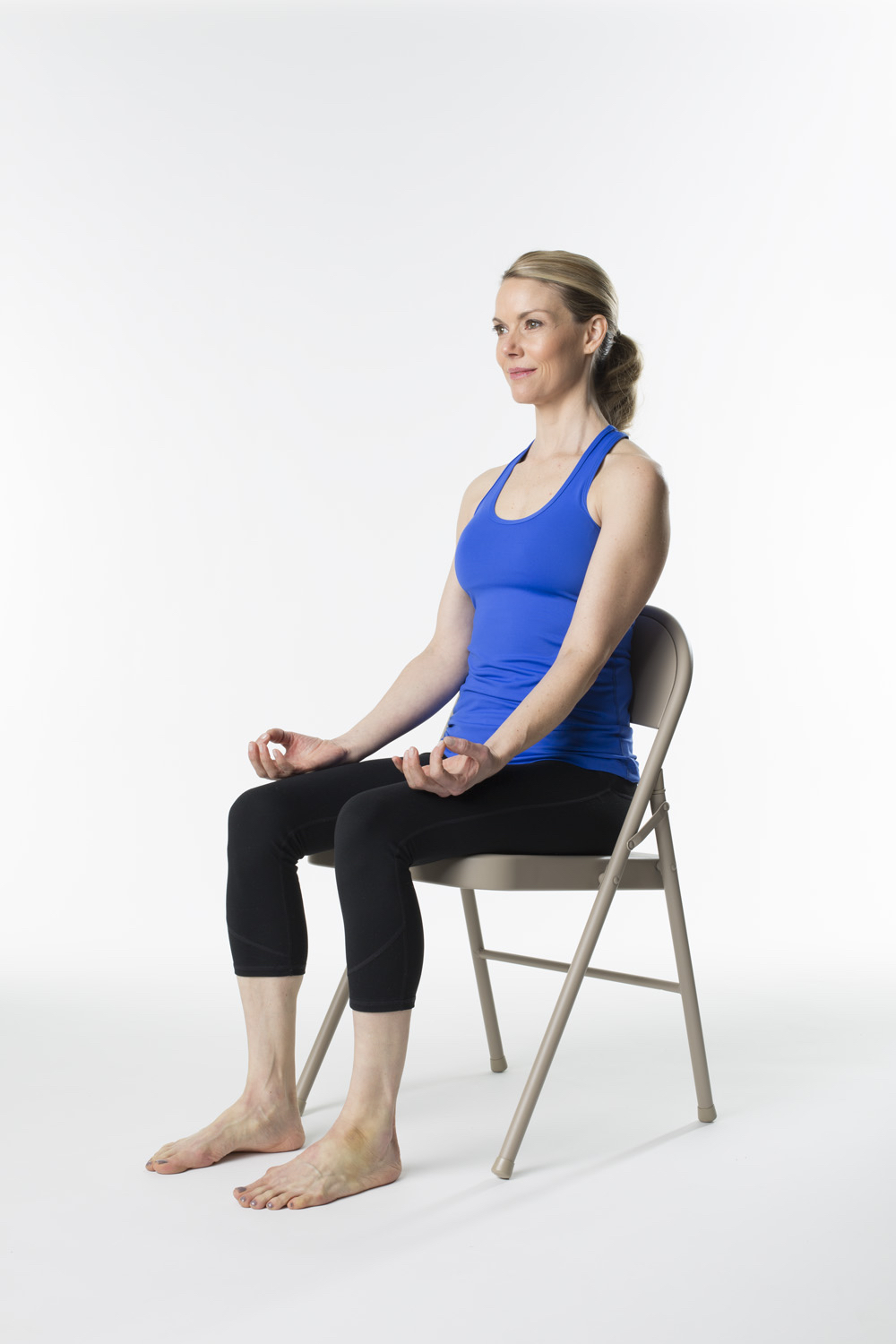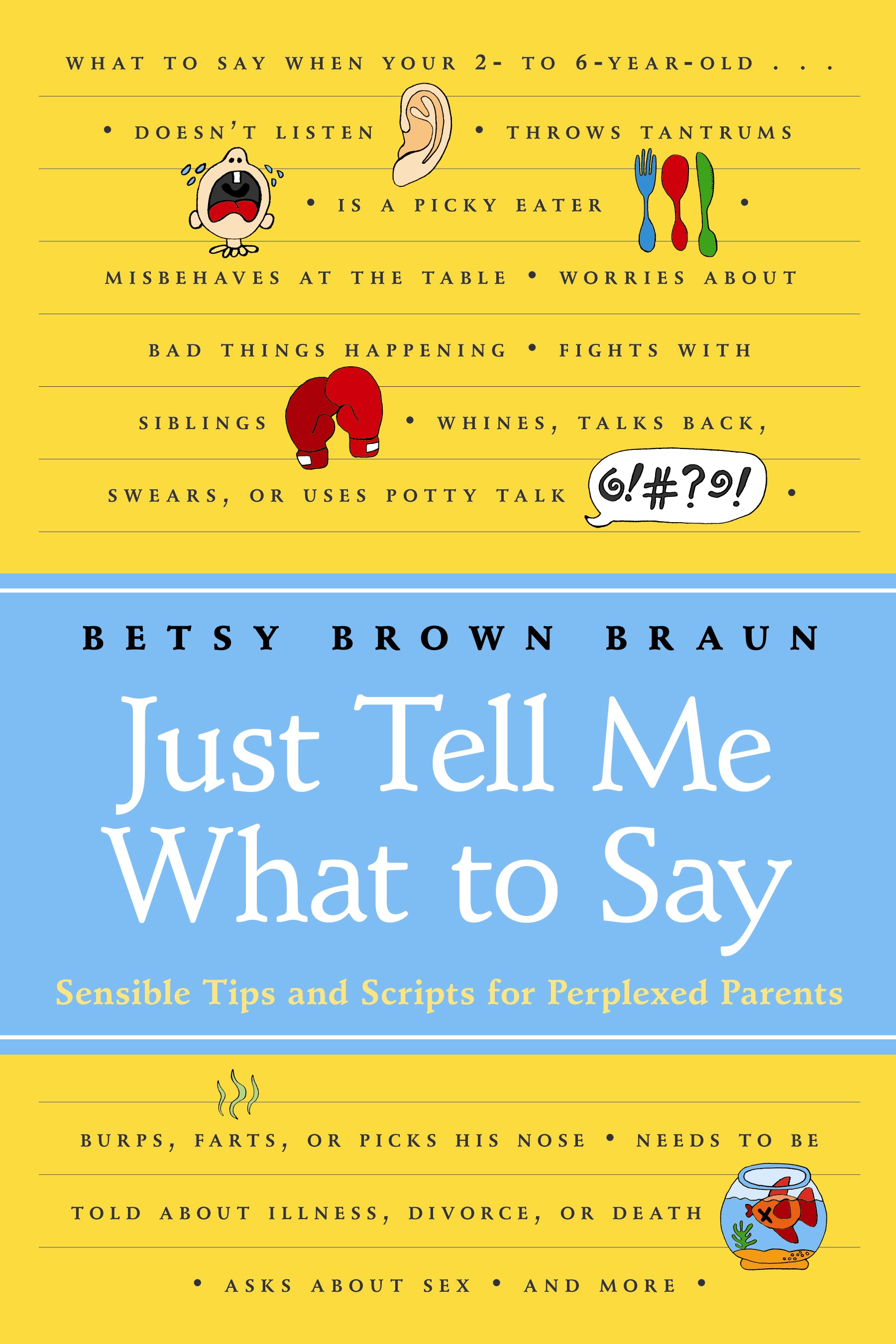Archive for the ‘Uncategorized’ Category
posted by AJGpr |
on fitness, health, Uncategorized |
 Photo: Chris Fanning
Photo: Chris Fanning
Don’t let sitting all day leave you stiff and sore. Steal five minutes to stretch away tightness with these simple yoga poses.
Health Magazine reached out to AJGpr client, celebrity Yoga and Pilates instructor, Kristin McGee to share some best chair yoga moves to combat back pain from her new book Chair Yoga: Sit, Stretch, and Strengthen Your Way to a Happier, Healthier You (HarperCollins 2017).
“Oh, my aching back!” I can’t tell you how many of my students have back issues. And it’s no wonder, considering most of us spend our days tied to our desk chairs and parked in the same position in front of our screens hour after hour. The problem: Sitting for prolonged periods can cause or exacerbate back issues. When we’re stuck in this position, our hip flexors shorten in front and pull on our lower back. Not to mention, constant slouching can lead, over time, to compressed disks. That’s why it’s crucial to stretch your back every day. Here, four moves you can do right in your office..
1. Backbend Arch
Start seated at edge of chair, placing hands behind you with fingers facing away from hips. Prop yourself up on fingertips, drawing sacrum in and up to lift lower back. Follow backbend all the way up chest to shoulder blades and open up entire front body. Hold and breathe for 8 to 10 breaths, then release.
2. Cat/Cow
Sit at edge of chair with feet flat on the floor. Place hands on knees and inhale, lifting chest and sticking hips out behind you. Lift gaze, open chest, and gently squeeze shoulder blades together (A). On an exhale, round chest, scoop in belly, and curl tailbone under as you drop head toward sternum (B). Repeat for a series of 10 cycles.

3. Lower-Back Circles
Sit with feet hip-width apart and hands resting on knees (A). Inhale, then begin circling torso clockwise, making sure to initiate movement from base of spine (B). Complete 8 to 10 rotations. Stop and then repeat the motion, this time circling in a counterclockwise direction. Continue alternating for 2 to 3 minutes.

4. Roll-Downs
Sit with feet hip-width apart and hands hanging at sides (A). From head, start rounding down through spine (B). Exhale, letting forehead release forward and the weight of your head bring you over until top of head is by thighs (C). Inhale; slowly start stacking vertebrae as you round up to sit. Draw belly button to spine to protect back, and feel the articulation as you round up. Continue rolling down and up for 5 to 8 cycles.

Adapted from Chair Yoga: Sit, Stretch, and Strengthen Your Way to a Happier, Healthier You by Kristin McGee ($19; amazon.com). Copyright 2017 by Kristin McGee. Reprinted by permission of William Morrow, an imprint of HarperCollins Publishers.

posted by AJGpr |
on Uncategorized |
When writer Lauren Smith Brody, author of The Fifth Trimester, needed expert parenting advice for her article 8 Things You Already Do That Are Great for Your Kid – she turned to longtime AJGpr client, parenting expert Betsy Brown Braun and best-selling author of Just Tell Me What To Say and You’re Not the Boss of Me.
For parents of both little and big ones this read is for you!
Below find Lauren’s article.
Ever gotten to the end of a long, packed day and worried that you didn’t do enough to help your child grow and develop? You can skip the guilt, because chances are, you probably did plenty! All of these everyday happenings help kids become brighter, happier, and stronger—without you even trying.
1. Smooching your partner. Babies may get adorably jealous when you lay one on your hubby, but don’t let that deter you! One study of 5,000 British families showed that the more often parents kiss each other, the less likely they are to yell at their kids.
2. Talking—a lot. Countless studies have shown how valuable just hearing your voice is to babies. And once your toddler is old enough, “talking through your day—even if they just sit in the back seat and babble back—sends the message to your child that you want them to know,” says child development and behavior specialist Betsy Brown Braun, author of Just Tell Me What to Say and You’re Not the Boss of Me.
3. Playing on the ground with them. You know how, for adults, taking the stairs is a hidden secret to good health? Experts say tummy time is like that for babies and toddlers: found moments that help their core strength as they reach for stuff or balance while being lifted up in “airplane.”
4. Greeting your child at the door. Do you give your sweetie a hug hello? “That very greeting sends a powerful message,” praises Braun. “One basic need children have is to feel that they are significant, that they make a difference in the family.” This simple moment does it for them, big-time.
5. Letting kids dress themselves. Takes longer, but so worth it. “Encouraging your child to dress herself fosters motor planning and coordination,” says pediatric occupational therapist Michelle Friedson Feld, OTR/L. “And learning to do things in order—like putting on underwear before their pants—helps with sequencing, a key literacy skill later on.”
6. Saying no. “Children need limits,” says Braun. For safety, yes, but also, “to learn how to deal with the natural limits and boundaries that life eventually dishes out. Every time you set a limit or make a rule, you’re making a better future for them.”
7. Reading your own (grown-up) books. That toppling pile of books on your bedside table may taunt you, but to your kids, it’s motivating. Seeing you read makes them want to read, too. Multiple studies have shown that the more books you have in the home overall, the more frequently children read.
8. Letting them stir the batter. When you let small kids help you cook, you’re teaching them so much. “You’re building math skills by measuring and hand-eye coordination with pouring,” says Feld. “Mixing is great, too, for arm strengthening and a better grip.”
posted by AJGpr |
on Uncategorized |
AJGpr client, child development and child behavioral specialist, Emma Jenner, recently commented on the Metz Family Blog musing that Stephanie Metz posted last October Why My Kids Are NOT the Center of My World.
With her new book Keep Calm and Parent On: A Guilt-Free Approach to Raising Children by Asking More from Them and Doing Less (Atria) due in stores on July 15th, Emma responded in her Huffington Post blog as follows.
A Childcare Professional’s Case for ‘Giving Up On Your Kids’
I want to applaud Stephanie Metz, the mum who dared write that her children are not the center of her world (which is not the same as giving up on them, by the way). As a nanny and parenting consultant, I have long espoused that we are doing our children a disservice by catering to their every need and catching their every fall. But it’s a hard message for parents to internalize, even harder for them to come out and say, and harder still to publish a blog about it! But Stephanie and the parents who found themselves nodding in response to her message should rest easy. The reason Stephanie’s message resonates is because it’s true: Teaching your children that they are not the center of everything teaches them invaluable life skills. Foremost among them are the following five:
1. Nutrition. When children don’t want to eat the healthy food they’re served, parents will either scramble to make them something else, or fight with them until they’ve consumed enough. But there’s another choice — one that holds that they either eat the food in front of them or wait until the next meal to eat again. Parents are uncomfortable with this approach because it means their child might (gasp) experience the very natural consequence of being hungry. So what? So let him be hungry for a few hours! He will ultimately learn to develop a more sophisticated palette for it, one that likes more than just mac n’ cheese and cupcakes.
2. Manners. Once I was at a hotel hot tub with the 4-year-old I took care of, and he dunked his towel in the water, though I had warned him not to. “Charles,” I had said when I saw his intent, “the people who work at this hotel work very hard to wash, dry, and fold those towels. It’s inconsiderate to make more work for them. If you put your towel in the water, I’m not getting you another one.” When he dunked it anyway, I refused to get him another towel. And guess what? When he got out of the hot tub, he had a wet towel and was cold for a moment (gasp again!). But he also experienced a natural consequence, and learned an important message not only about boundaries, but also about how the way we behave affects others.
3. Parent self-care. To be a good parent, you must take care of yourself. Not running to meet your child’s every whim makes that job easier. You don’t have to get up from the table to get your child seconds before you’ve eaten your food. You don’t have to run across the zoo to get your child a drink because she happens to be thirsty right that moment. Children can and should learn to wait to have their needs met, and encouraging them to do so means you have more time for your own needs.
4. Sleep. Allowing your child to experience discomfort is perhaps the most difficult in the very fraught arena of sleep training. When your child is old enough to sleep through the night, but does not, instead of getting up countlessly to aid him back to sleep, teach him instead to help himself, to self-soothe. Yes, it means he won’t be happy every second of the night– in fact, he’ll be furious. But in the end if you can tolerate his temporary discomfort, you and he will each get more rest.
5. Self-esteem. Let’s narrow this down and attack just the issue of birthday parties. We’re so wired to protect children’s feelings at all costs that we allow them to invite an entire class to a birthday party so that no one is left out. Well, so what if some people are left out? Isn’t that the way the world works? Maybe sometimes your child will be left out, and maybe sometimes that won’t feel good to her. Teach her how to roll with the punches, and she will develop into a much better adjusted human being, one who does not call you in tears in her 20s when she learns she hasn’t been invited to someone’s wedding or baby shower.
You can’t make it all better forever, guys. So prepare your children for that reality instead of setting them up for a big fall.
posted by AJGpr |
on Uncategorized |
AJGpr client Steven Angel and his Reading & Rhythm program was recently featured in a segment produced by Laura Diaz on Fox 11.
Steven was a child prodigy who started playing the drums at age three. At six, he played with the legendary Buddy Rich’s band, opened for Herman’s Hermits and The Animals while on tour in the US and Canada, and at 16, Steven recorded an album with Jimi Hendrix’s bass player. Today, Steven focuses his attention helping others with the beat of the drum with his non-profit organization Drumming for Your Life Institute (DFYL).
Of the four programs DFYL currently runs, their greatest expansion is with the Reading & Rhythm program. With Reading & Rhythm, Steven has created an innovative in-class or afterschool program that addresses the educational and psychological needs of struggling readers K-12. Reading & Rhythm improves student’s reading scores by creating better comprehension and increased fluency. Unlike other reading programs, which focus on left-brain learning, DFYL uses rhythm to integrate the left and right hemispheres of the brain. The use of rhythm wakes up the whole brain and organically integrating the both hemispheres of the brain – fostering Intuitive Intelligence.
Steven and his team of teachers witness daily the positive difference that Reading & Rhythm is making in the lives of kids who are struggling readers or illiterate. The inability to read well profoundly harms a child’s ability to succeed in school and in life. The merging of rhythm into the learning process helps transform negative energy into a positive force in the classroom. After participating in the 6-week program one LA-based middle school student declared, “Now, I feel smart.”
“Statistics show that students with low literacy are at high risk of failing to graduate high school, becoming unemployed, obtaining only low-paying jobs, living in poverty, and being convicted of a crime,” says Steven. His goal and that of DFYL is to address the nation’s reading crisis and alleviate illiteracy, which is growing in epic proportions in the United States.
Since its inception in 2002, the Reading & Rhythm program has witnessed tremendous growth reaching kids as far away as Massachusetts and London. In over a decade, more than 3,000 struggling kids have passed through the program increasing their reading scores by an average of 50%.
Steven, a leading advocate of the educational benefits of drumming, trains and certifies teachers and facilitators nationally in the Reading & Rhythm Teacher Training Program. Imagine how many kids in your school could benefit by bringing Reading & Rhythm into their classroom? Or with substantial funding, imagine how many kids DFYL could teach?
posted by AJGpr |
on Uncategorized |
Last July, Today’s Parent, an online parenting magazine published an article by AJGpr client baby and toddler expert, Blythe Lipman entitled Toddlers Gone Wild!
Here it is – Enjoy!
Toddlers Gone Wild!
Why won’t my toddler listen? Are those words familiar? Toddlerhood is exciting! It’s a time when your little one is trying out his wings. He wants to do things by himself and doesn’t want you to tell or show him how to do it. But it’s your job to not only teach him about the world, but to set boundaries that will keep him safe during his exploration.
Remember, a toddler’s brain is like a sponge, he wants to know about everything. According to Erik Erikson’s theory of psychosocial development, children 18 months to 3 years old need to attain the developmental task of autonomy.
It is not uncommon for you to hear your toddler say “NO!” even when your toddler means YES. This is one way for them to assert their independence. The use of the “NO” word is a manifestation of your tots developing sense of autonomy.
And many times when you tell him no, he just won’t listen. So it can be a constant tug of war.
Here are a dozen tips to tame your toddler while making the world his oyster?
1. Set up ground rules and stick to them. Does he hold your hand while shopping? Does he brush his teeth after each meal? Your rules, the same way each time.
2. Repeat your request twice and remind your toddler what the consequence will be if he doesn’t listen and follow-through.
3. Be consistent no matter how tired you might be. Toddlers and surprises are the perfect mix for a meltdown. Knowing what to expect will make everyone’s life easier.
4. “No means No” it doesn’t mean maybe. If you need to give an explanation, use as few words as necessary. Most toddlers don’t hear more than the first five words anyway.
5. Don’t lose your cool or it’s all over. Toddlers are smart and they know how to push your buttons.
6. Talk to your hubby or partner and make sure you’re both on the same page when it comes to your toddler. United you stand in front of your precious. Keep disagreements behind closed doors.
7. Use positive reinforcement with your toddler. Tell him what a great job he’s doing but don’t overdo it. He can’t and won’t hit the mark every time. It’s not only impossible but the perfect set-up for failure. Keep the gushing to a minimum.
8. When it’s time for bed, bath, school, etc. leave extra time to get ready and give your toddler a 10-minute heads up. Transition can be difficult at this age.
9. If he gives you a hard time and won’t listen, try this. Purchase a timer, set it and let him know when it rings it’s time to stop what he’s doing and move on to the next activity.
10. Make a sticker chart but keep it simple. Pick a task that he has a difficult time completing and give a sticker for each success. Five stickers earn a special treat like frozen yogurt, a Hershey’s kiss along with a hug will bring a smile. It’s not necessary to go to the toy store and spend lots of money.
11. As a last resort, make a time-out toy box and take away a favorite toy. Leave the toy in time-out until your toddler does what you asked. Sometimes an easier concept to understand than putting him in time-out.
12. There is nothing more important than being a good role model. Imitation is the sincerest form of flattery. So when you see your toddler do something just like you, know in your heart that you are doing a great job!
Blythe Lipman is the president of Baby Instructions and author of two award-winning parenting books, Help! My Baby Came Without Instructions and Help! My Toddler Came Without Instructions.
You can hear Blythe host her weekly radio show Baby and Toddler Instructions every Wednesday, 11am EST.
Blythe is also available for in-home, video, and telephone consultations. Contact Blythe at babyinstructions@cox.net or call her office (480)-510-1453. Become Blythe’s Fan on Facebook and follower her on Twitter.
posted by AJGpr |
on Uncategorized |
AJGpr has the pleasure to announce that the trailer for DUMBBELLS is now on HULU. If you are not a member of HULU then watch it here and be ready to laugh ’till your side hurts.
DUMBBELLS is a hilarious buddy comedy co-written and co-starring AJGpr client Hoyt Richards. With his co-star, co-writer, and co-produder Brian Drolet — Hoyt has put together an outstanding ensemble including comedic legend Carl Reiner, eccentrics Tom Arnold, Jay Mohr, Jaleel White and Andy Milonakis, and celebrated male model Fabio.
During the 80’s and 90’s, Hoyt Richards was the biggest name in male modeling and sometimes referred to as the “first male Supermodel.” He was photographed by the best in the business — Bruce Weber, Richard Avedon, Helmut Newton, Steven Meisel, and Horst and was the face that launched a thousand advertising campaigns including Gianni Versace, Valentino, Gianfranco Ferrè, Ralph Lauren, Burberry, Dunhill, Cartier, and Donna Karan. Now he is living the Hollywood dream with his movie set for release January 10, 2014.
DUMBBELLS follows Chris Long, an ex-NCAA star turned trainer who finds new purpose when his gym’s shallow new owner, Jack, unleashes a lucrative plan to turn the neglected business into a reality show. When Chris’ complacent peers resist this new direction, he and Jack form an unlikely alliance that allows them to face the demons of their pasts and ultimately, save their gym’s future.
The movie is getting an early “buzz” around Hollywood with press talking — AidyReview.com, Broadwayworld.com, Dailymotion.com, ScreenDaily.com, The New York Times, and The Washington Post to name a few.
posted by AJGpr |
on Uncategorized |
Jennifer Garner Reads Just Tell Me What To Say
On her way to pick up Seraphina from ballet class, Thursday, August 8th, the paparazzi caught her and People.com featured Jennifer Garner, mother of three reading the parenting book Just Tell Me What To Say: Sensible Tips and Scripts for Perplexed Parents, by AJGpr client and parenting expert Betsy Brown Braun.
Betsy is the author of two best-selling books Just Tell Me What To Say and You’re Not The Boss Of Me.
posted by AJGpr |
on Uncategorized |
My client parenting expert, Betsy Brown Braun talks to Vicky and Jen: What Really Matters about kids today and playdates. Playdates come with issues: different parenting styles, new rules, safety concerns, bad kids and left behind siblings. Parents need solutions. Betsy Brown Braun gives listeners the protocol for productive and stress-free playdates. Have a listen here.
You can find Betsy’s books – Just Tell Me What To Say and You’re Not The Boss of Me on Amazon.
posted by AJGpr |
on Uncategorized |
My client, Nina L. Shapiro, MD, FACS, FAAP Director, Pediatric Otolaryngology and Associate Professor of Surgery at the UCLA School of Medicine shares insights on how to avoid a painful summer in her feature article in Westside Today.
Dr. Shapiro is the author of Take a Deep Breath: Clear The Air For The Health Of Your Child (World Scientific, January 2012)
Here are her suggestions to avoid ‘swimmer’s ear.”
The joys of swimming, toned moms, and tired tykes. But, like with most things in life there is also a downside to this stellar summer exercise: swimmer’s ear. A seasonal nuisance for both children and adults “otitis externa,” or “outer ear infection” as it technically referred to, is oftentimes painful. But, there are some precautions that can be taken to minimize ones’ chances of suffering an earful of hurt.
Swimmer’s Ear is caused by swelling and irritation of the skin of the ear canal. What causes this skin to go bad? The bacteria, or fungus, growing rapidly thanks to the warmth, water and humidity of watery settings. When water gets trapped in the ear canal, bacteria that usually exist quietly in the skin begin to grow, as these organisms are nurtured by these moist environs, resulting in their multiplying, thus causing swelling and pain. Other common symptoms include itchiness; wet, sticky drainage from the ear; pain when touching the ear; and occasionally fever, hearing loss, or facial swelling and redness. Once these microbial critters are entrenched, the infection can spread to the rest of the outer ear and face, so treatment, an antibiotic or antifungal eardrop, prescribed by your doctor, is a necessity. It’s also best to stay out of the water until the infection clears.
So how can you and your family avoid going down this moisture-fed rabbit hole? Here are some tips.
1. When you get out of the water, get the water out.
When you or your tyke exits the pool, gently dry the outside of the ear with a towel. If your child hasn’t had any ear surgery, including ear tubes, it’s safe to use an over-the-counter alcohol-based eardrop, which helps absorb ear canal moisture after swimming. If it still feels like water is trapped, set a hair dryer on a low, warm setting, and gently dry the ear, holding the hair dryer at least six inches from the skin.
2. Water, water go away – you won’t be in my canal today.
If you or your kids like to wear earplugs, then make sure that they are properly fitted so that they can help cut out or down on water entry into the canal in the first place.
3. Key Tip: No Q-Tip
DO NOT use cotton-tipped applicators. These are actually the second most common culprits of “swimmer’s ear,” after swimming itself. While it feels like these implements “clean” the ear of wax, water, and debris, they actually strip the delicate ear canal skin of its protective lining, thus enabling the aforementioned critters to take hold. If you must ‘clean’ your kids ears, use the corner of a washcloth to rub away what you can see. When using a cotton-tipped applicator, you remove only a little bit of wax, and push the rest into the deeper part of the ear canal, which inevitably leads to a big pain in the…ear.
Remember what your mother, grandmother and great-grandmother said when grooming ears: “Nothing smaller than your elbow in your ear!”
posted by AJGpr |
on Uncategorized |
The May/June issue of Calgary’s Child features an article by client, Karen L. Schiltz, PhD called “Why Don’t They Like Me: 30 Social Skill Shortcomings.” In this article, Dr. Schiltz discusses the importance of positive peer relations among children and what are the signs that your child may have problems interacting with other children.
Karen L. Schiltz, Ph.D., is the author of Beyond The Label: A Guide to Unlocking a Child’s Educational Potential (Oxford University Press, September 2011).



 Photo: Chris Fanning
Photo: Chris Fanning

















